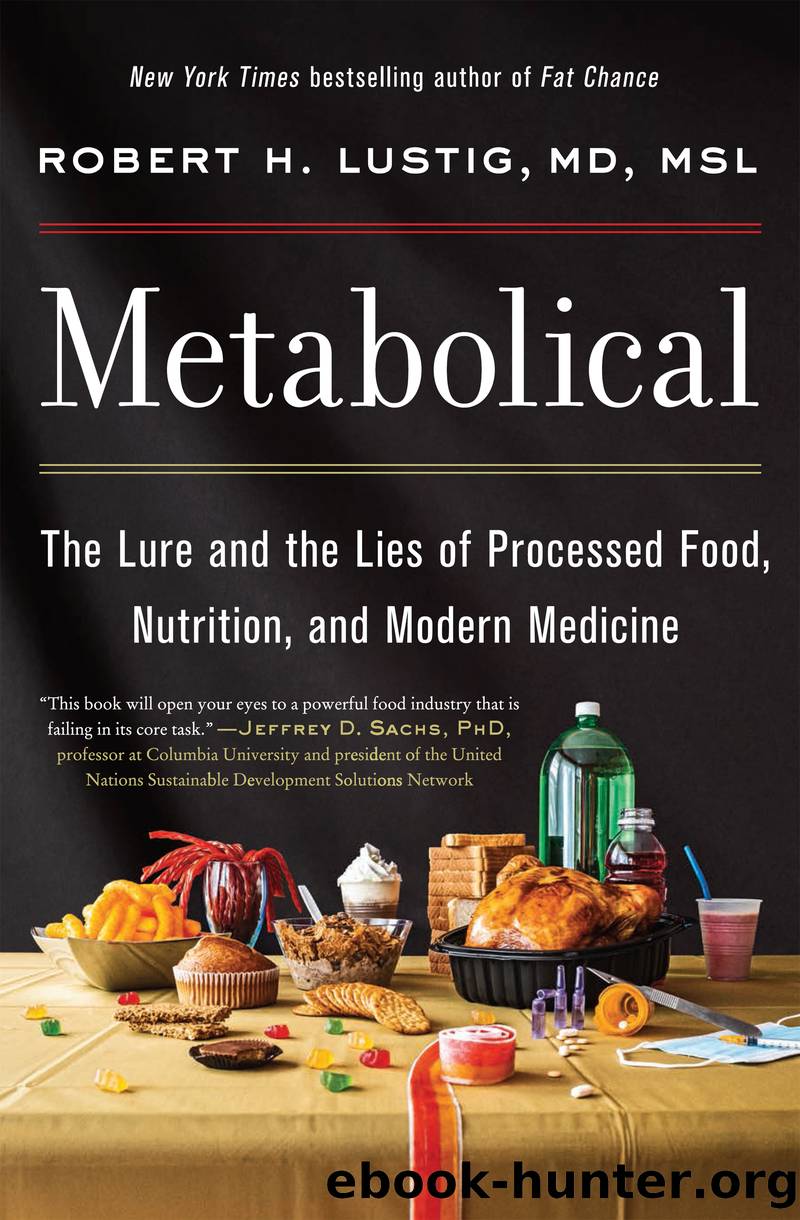Metabolical by Robert H. Lustig

Author:Robert H. Lustig
Language: eng
Format: epub
Publisher: Harper Wave
Published: 2021-03-08T00:00:00+00:00
Keto
Compared to the Standard American Diet of 45 percent carbohydrate, 40 percent fat, and 15 percent protein, a low-carb, high-fat (LCHF) diet like Atkins is 25 percent carbohydrate, 60 percent fat, and 15 percent protein. The ketogenic diet is even more extremeâa very-high-fat, very-low-carb diet consisting of mostly butter, eggs, cream, bacon, and green vegetables, to provide a dietary composition of 10 percent carbohydrate, 70 percent fat, and 20 percent protein. Say goodbye to Italian dinner.
The keto diet has been shown to result in significant and durable weight loss, improvement in insulin sensitivity in a majority of obese people, and diabetes reversal with medication discontinuation in a majority of patients.
Most people, when faced with a life of no bread, no pasta, no sugar, say no way. This diet may be extreme, but it has sound principles. Explorer Vilhjalmur Stefansson was shipwrecked in the Arctic for fifteen months and forced to eat nothing but caribou and whale blubber. When he returned to the US, he felt healthier than before. Many years later, to prove the point, he and his colleague checked themselves into New Yorkâs Bellevue Hospital and ate only meat for one yearâthey were healthier than the investigators, at least with the diagnostic tests available at the time.
The science has now been researched extensively, and the keto diet works through two mechanisms. The first is that in the relative absence of carbohydrate and insulin, the adipocyte will release fatty acids into the bloodstream, which go to the liver and are turned into ketones (e.g., beta-hydroxybutyrate) to be used for energy in the rest of the body, especially the brain. The liver kicks in to utilize any stored liver fat, and reduces fatty liver, insulin resistance, and insulin levels. The reduction in insulin improves leptin resistance, which reduces appetite. Insulin reduction will also occur with the less stringent LCHF diet. The second mechanism is beta-hydroxybutyrate itself, which is a signaling molecule that is measured in the urine or breath to determine if youâre in ketosis. It tells the liver mitochondria to increase the production of sirtuin-1, which activates AMP-kinase and reduces mTOR, increasing metabolic rate, and induces autophagy (see Chapters 7 and 8). Further, beta-hydroxybutyrate alters the gut microbiome by reducing inflammatory cells and responses in the intestine. Last, beta-hydroxybutyrate also increases the synthesis of brain-derived neurotrophic factor (BDNF), which makes neurons grow and protects against dementia. This is why the keto diet has found favor among various Alzheimerâs researchers.
Sounds pretty darn good, especially if youâre metabolically illâwhatâs the downside? Itâs really hard to stay in ketosis. After two months, most ketogenic diets arenât ketogenic anymore because people arenât that diligent. In addition, keto adherents tend to be low in selenium, magnesium, phosphorus, and vitamins B and C (however, they donât have to be if they consume enough fiber in the form of leafy greens, as the micronutrients travel with the fiber). Newfangled ketone ester drinks are now on the market to try to biohack your bodyâs system by adding ketones
Download
This site does not store any files on its server. We only index and link to content provided by other sites. Please contact the content providers to delete copyright contents if any and email us, we'll remove relevant links or contents immediately.
Unwinding Anxiety by Judson Brewer(70170)
The Art of Coaching by Elena Aguilar(50013)
The Fast Metabolism Diet Cookbook by Haylie Pomroy(20488)
Rewire Your Anxious Brain by Catherine M. Pittman(17589)
Healthy Aging For Dummies by Brent Agin & Sharon Perkins RN(16609)
Talking to Strangers by Malcolm Gladwell(11876)
The Art of Thinking Clearly by Rolf Dobelli(8841)
Crazy Rich Asians by Kevin Kwan(8349)
Mindhunter: Inside the FBI's Elite Serial Crime Unit by John E. Douglas & Mark Olshaker(7834)
The Compound Effect by Darren Hardy(7557)
Crystal Healing for Women by Mariah K. Lyons(7376)
Therapeutic Modalities for Musculoskeletal Injuries, 4E by Craig R. Denegar & Ethan Saliba & Susan Saliba(7349)
Periodization Training for Sports by Tudor Bompa(7328)
Bodyweight Strength Training by Jay Cardiello(7184)
Becoming Supernatural by Dr. Joe Dispenza(7105)
Wonder by R. J. Palacio(7059)
Tools of Titans by Timothy Ferriss(6946)
Should I Stay or Should I Go? by Ramani Durvasula(6784)
How to Be a Bawse: A Guide to Conquering Life by Lilly Singh(6693)
